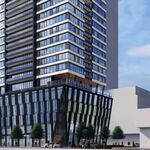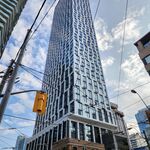E
Ed007Toronto
Guest
Building subways without subsidies
Aug. 28, 2006. 01:00 AM
RICHARD GILBERT
www.thestar.com/NASApp/cs...8350116795
Transit subsidies are relatively new. The TTC functioned without capital subsidies until the 1960s, and without regular operating subsidies until the 1970s. The initial section of the Yonge line, opened in 1954, was funded almost entirely from the fare box, as were much of the University line and the initial section of the Bloor-Danforth line, opened in 1966.
Now, operating subsidies are expected, and so are even larger capital subsidies, especially for new subway lines.
Several things have changed. The most important is that, compared with the 1950s, the TTC now provides twice as much service for every 100 passengers it carries (about 47 vehicle-kilometres of service in 2004, compared with 23 in 1954).
In the 1950s, service was mostly in the denser, inner parts of Toronto. Since then, it has been progressively extended to less dense areas, but fares have not changed to reflect the increasing distances travelled. Providing this extra service without a corresponding revenue increase pushed the TTC into a deficit position.
Can we go back to the 1950s, when the TTC paid for itself? A step in this direction would be to plan subway extensions so that they generate enough revenue from ridership to cover the costs of construction.
Consider the proposed extension of the Spadina line from Downsview to Steeles Ave. or even to Vaughan City Centre. How many TTC fares would this extension have to generate to cover not only the operating costs of the new service but also its capital costs? And what density of development would be required at each station to generate this number of fares?
Figuring these things out is not rocket science.
Assumptions have to be made about costs, interest rates, car ownership, journey habits, and, above all, ridership rates. The result is that each station would have about 40,000 people living or working within about 600 metres. Then, over 35 years, the subway extension would pay for itself from the fares it would generate.
This is medium-density development, about three times that of the low-rise neighbourhoods that fringe Toronto's downtown. It's similar to the density at King St. and Spadina Ave., where there has been an extraordinary boom in condominium construction and conversion, and to what is proposed for the West Don Lands district.
For about 600 metres around subway stations buildings would have an average of seven storeys, with generous provision for parks and public spaces. This would be more extensive development than at any of Toronto's present subway stations, other than those in the downtown.
Could this be done? Could there be enough development along a Spadina line extension to provide the farebox revenue needed to pay for the cost of the extension and its operation?
The answer is — not without intervention. What would be required is a development corporation, more along the lines of Britain's successful London Docklands Development Corporation (LDDC) than the weakly empowered Toronto Waterfront Development Corporation.
The time-limited LDDC had extensive powers to facilitate development, expropriate land and borrow funds, indeed to do everything required to ensure that there was both development and the necessary infrastructure, including transit.
A Spadina Line Development Corporation with appropriate time-limited authority could, over 10 to 15 years, deliver both the subway extension and all the development required to support it. The key to successful development at such densities would be provision for a wide range of incomes, as in Toronto's St. Lawrence neighbourhood. The territory of the former LDDC now embraces some of London's most expensive residences as well as much of its social housing.
The Spadina Development Corp. could also be given responsibility for intensifying the rest of the Spadina line, which, even after 27 years of operation, has inefficiently low ridership because the areas around its stations remain underdeveloped.
The same model could be applied to replacing the Scarborough RT line with an extension of the Bloor-Danforth subway line. The model could also serve to extend this line westward into Mississauga, and the Yonge line northward into Markham.
Building all four extensions as proposed would, over 15 years, dramatically increase the City of Toronto's population. Toronto would gain about half of the likely growth in the region's population instead of the anticipated one-tenth. The result would be a massive reversal of sprawl and a substantial invigoration of our declining city.
Above all, we would have affordable, major additions to our transit system, which will be more necessary than ever as we move into the post-carbon era of energy constraints.
Richard Gilbert is a transport and energy consultant with clients in Asia, Europe, and North America. He was a Toronto councillor from 1976 to 1991.
Aug. 28, 2006. 01:00 AM
RICHARD GILBERT
www.thestar.com/NASApp/cs...8350116795
Transit subsidies are relatively new. The TTC functioned without capital subsidies until the 1960s, and without regular operating subsidies until the 1970s. The initial section of the Yonge line, opened in 1954, was funded almost entirely from the fare box, as were much of the University line and the initial section of the Bloor-Danforth line, opened in 1966.
Now, operating subsidies are expected, and so are even larger capital subsidies, especially for new subway lines.
Several things have changed. The most important is that, compared with the 1950s, the TTC now provides twice as much service for every 100 passengers it carries (about 47 vehicle-kilometres of service in 2004, compared with 23 in 1954).
In the 1950s, service was mostly in the denser, inner parts of Toronto. Since then, it has been progressively extended to less dense areas, but fares have not changed to reflect the increasing distances travelled. Providing this extra service without a corresponding revenue increase pushed the TTC into a deficit position.
Can we go back to the 1950s, when the TTC paid for itself? A step in this direction would be to plan subway extensions so that they generate enough revenue from ridership to cover the costs of construction.
Consider the proposed extension of the Spadina line from Downsview to Steeles Ave. or even to Vaughan City Centre. How many TTC fares would this extension have to generate to cover not only the operating costs of the new service but also its capital costs? And what density of development would be required at each station to generate this number of fares?
Figuring these things out is not rocket science.
Assumptions have to be made about costs, interest rates, car ownership, journey habits, and, above all, ridership rates. The result is that each station would have about 40,000 people living or working within about 600 metres. Then, over 35 years, the subway extension would pay for itself from the fares it would generate.
This is medium-density development, about three times that of the low-rise neighbourhoods that fringe Toronto's downtown. It's similar to the density at King St. and Spadina Ave., where there has been an extraordinary boom in condominium construction and conversion, and to what is proposed for the West Don Lands district.
For about 600 metres around subway stations buildings would have an average of seven storeys, with generous provision for parks and public spaces. This would be more extensive development than at any of Toronto's present subway stations, other than those in the downtown.
Could this be done? Could there be enough development along a Spadina line extension to provide the farebox revenue needed to pay for the cost of the extension and its operation?
The answer is — not without intervention. What would be required is a development corporation, more along the lines of Britain's successful London Docklands Development Corporation (LDDC) than the weakly empowered Toronto Waterfront Development Corporation.
The time-limited LDDC had extensive powers to facilitate development, expropriate land and borrow funds, indeed to do everything required to ensure that there was both development and the necessary infrastructure, including transit.
A Spadina Line Development Corporation with appropriate time-limited authority could, over 10 to 15 years, deliver both the subway extension and all the development required to support it. The key to successful development at such densities would be provision for a wide range of incomes, as in Toronto's St. Lawrence neighbourhood. The territory of the former LDDC now embraces some of London's most expensive residences as well as much of its social housing.
The Spadina Development Corp. could also be given responsibility for intensifying the rest of the Spadina line, which, even after 27 years of operation, has inefficiently low ridership because the areas around its stations remain underdeveloped.
The same model could be applied to replacing the Scarborough RT line with an extension of the Bloor-Danforth subway line. The model could also serve to extend this line westward into Mississauga, and the Yonge line northward into Markham.
Building all four extensions as proposed would, over 15 years, dramatically increase the City of Toronto's population. Toronto would gain about half of the likely growth in the region's population instead of the anticipated one-tenth. The result would be a massive reversal of sprawl and a substantial invigoration of our declining city.
Above all, we would have affordable, major additions to our transit system, which will be more necessary than ever as we move into the post-carbon era of energy constraints.
Richard Gilbert is a transport and energy consultant with clients in Asia, Europe, and North America. He was a Toronto councillor from 1976 to 1991.




